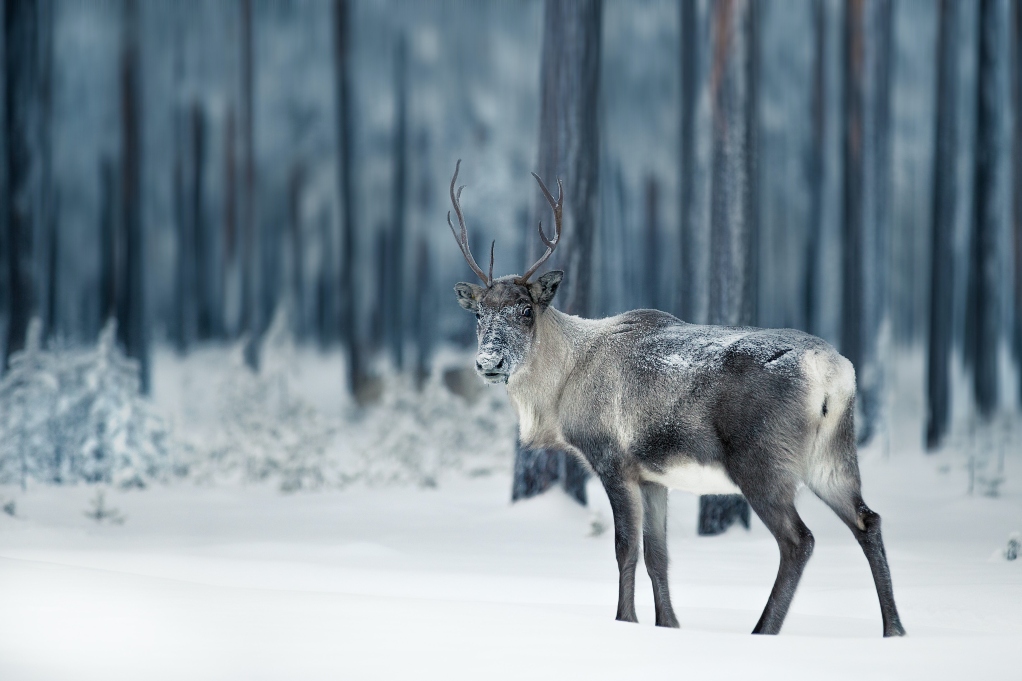You know Dasher and Dancer, Prancer and Vixen, Comet and Cupid, Donner and Blitzen, but do you recall the most famous reindeer of all?
Over the last several weeks tales of Rudolph, Clarice, Sven, and Santa’s eight reindeer have filled our songs, movies, and books. These fictional reindeer are pretty amazing, but how much do you know about real reindeer?
What’s the difference between reindeer and caribou? Geography! Caribou and reindeer are the same species, Rangifer tarandus. Both have incredible adaptations to survive the harsh conditions of the very far north. Reindeer however live in Scandinavia and northern Asia where they have been domesticated and herded by local people for over two thousand years. Caribou are their taller North American counterparts, roaming Canada and Alaska.
Santa’s sleigh travels around the world overnight, how far do Caribou travel? Caribou have the longest migration of any land-based mammal. They are constantly on the move in search of food– think lichens, not carrots. In the summer, they head north to give birth. The tundra is filled with abundant grasses, moss, and ferns for the caribou and their young. At the first snowfall, they migrate south again, trekking nearly 1,600 miles total in a year.
In Clement C. Moore’s poem “A Visit From St. Nicholas,” Santa’s eight tiny reindeer are heard prancing and pawing on the roof. Would your roof support eight caribou? Standing 4-5 feet tall at the shoulders, caribou can weigh between 240-700 pounds. That is about the size of a small horse. Their hooves are quite large with a hollowed out bottom. These unique feet are specially designed to support caribou on the snow, paddle through water, and scoop through snow to find food. True reindeer would cause quite a bit of damage to your rooftop.
Are the reindeer pulling Santa’s sleigh male or female? Unlike deer, elk, and moose, both sexes of caribou have antlers. Males drop their antlers shortly after breeding season in the fall and are antlerless by December. Females however keep theirs over winter until they calve in the spring. That means the ladies are doing all the heavy lifting to deliver the gifts!
“Up on the rooftop click, click, click…” is that how they would sound? Yes! Reindeer and caribou have tendons that slide over their foot bones as they walk, producing a loud click. The sound may help herds stay together during cold, foggy weather. Larger reindeer have a louder clicking sound.
How about Rudolph’s glowing red nose? An extraordinary adaptation for extremely cold temperatures, the reindeer’s nose has a cavity which warms cold air before it enters their lungs and cools the air before it exhales. When we breathe out in winter our breath produces steam. Reindeer trap this steam in their nose and condense the vapor. Their complex nose is full of blood vessels, making it glow red under a thermal camera. Conserving heat, energy, and moisture, their special nose allows reindeer to not only survive but thrive in extremely cold climates.
Like many animals of the arctic, caribou herds are declining. Human development in the arctic and climate change disrupt their migration and food supply. It will take more than magic to help them adapt quickly enough to overcome human impact. Your choices and actions can help these astonishing creatures survive beyond our holiday traditions.
Julie Borgmann is the Executive Director for Red-tail Land Conservancy. Her passion is connecting people to nature for conservation and wellbeing.
Photo by Saad Chaudhry on Unsplash




